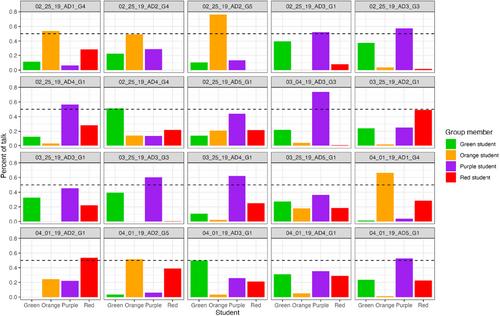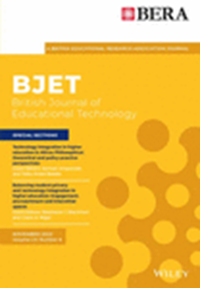Speech analysis of teaching assistant interventions in small group collaborative problem solving with undergraduate engineering students
Abstract
This descriptive study focuses on using voice activity detection (VAD) algorithms to extract student speech data in order to better understand the collaboration of small group work and the impact of teaching assistant (TA) interventions in undergraduate engineering discussion sections. Audio data were recorded from individual students wearing head-mounted noise-cancelling microphones. Video data of each student group were manually coded for collaborative behaviours (eg, group task relatedness, group verbal interaction and group talk content) of students and TA–student interactions. The analysis includes information about the turn taking, overall speech duration patterns and amounts of overlapping speech observed both when TAs were intervening with groups and when they were not. We found that TAs very rarely provided explicit support regarding collaboration. Key speech metrics, such as amount of turn overlap and maximum turn duration, revealed important information about the nature of student small group discussions and TA interventions. TA interactions during small group collaboration are complex and require nuanced treatments when considering the design of supportive tools.
Practitioner notes
What is already known about this topic
- Student turn taking can provide information about the nature of student discussions and collaboration.
- Real classroom audio data of small groups typically have lots of background noise and present challenges for audio analysis.
- TAs have little training in how to productively intervene with students about collaborative skills.
What this paper adds
- TA interaction with groups primarily focused on task progress and understanding of concepts with negligible explicit support on building collaborative skills.
- TAs intervened with the groups often which gave the students little time for uptake of their suggestions or deeper discussion.
- Student turn overlap was higher without the presence of TAs.
- Maximum turn duration can be an important real-time turn metric to identify the least verbally active student participant in a group.
Implications for practice and/or policy
- TA training should include information about how to monitor groups for collaborative behaviours and when and how they should intervene to provide feedback and support.
- TA feedback systems should keep track of previous interventions by TAs (especially in contexts where there are multiple TAs facilitating) and the duration since previous intervention to ensure that TAs do not intervene with a group too frequently with little time for student uptake.
- Maximum turn duration could be used as a real-time metric to identify the least verbally active student in a group so that support could be provided to them by the TAs.


 求助内容:
求助内容: 应助结果提醒方式:
应助结果提醒方式:


